Abstract
Most adults in North America are either light drinkers or abstainers, so alcohol does not cause them problems. However, a small but often highly visible minority--approximately 5% of the adult population--show major symptoms of alcohol dependence. Between these extremes, there is a sizable group of about 20% of the population, particularly young men, who are drinking at risk levels and have encountered some problems related to their alcohol use. Traditionally, physicians' efforts have focused on diagnosing and treating patients with a substantial history of alcohol dependence, and relatively little attention has been given to early intervention with nondependent problem drinkers, such as identifying patients who present in primary care settings with alcohol-related morbidity or an accidental injury. Recent evidence indicates that early intervention by primary care physicians is an effective strategy for reducing alcohol problems among patients.
Full text
PDF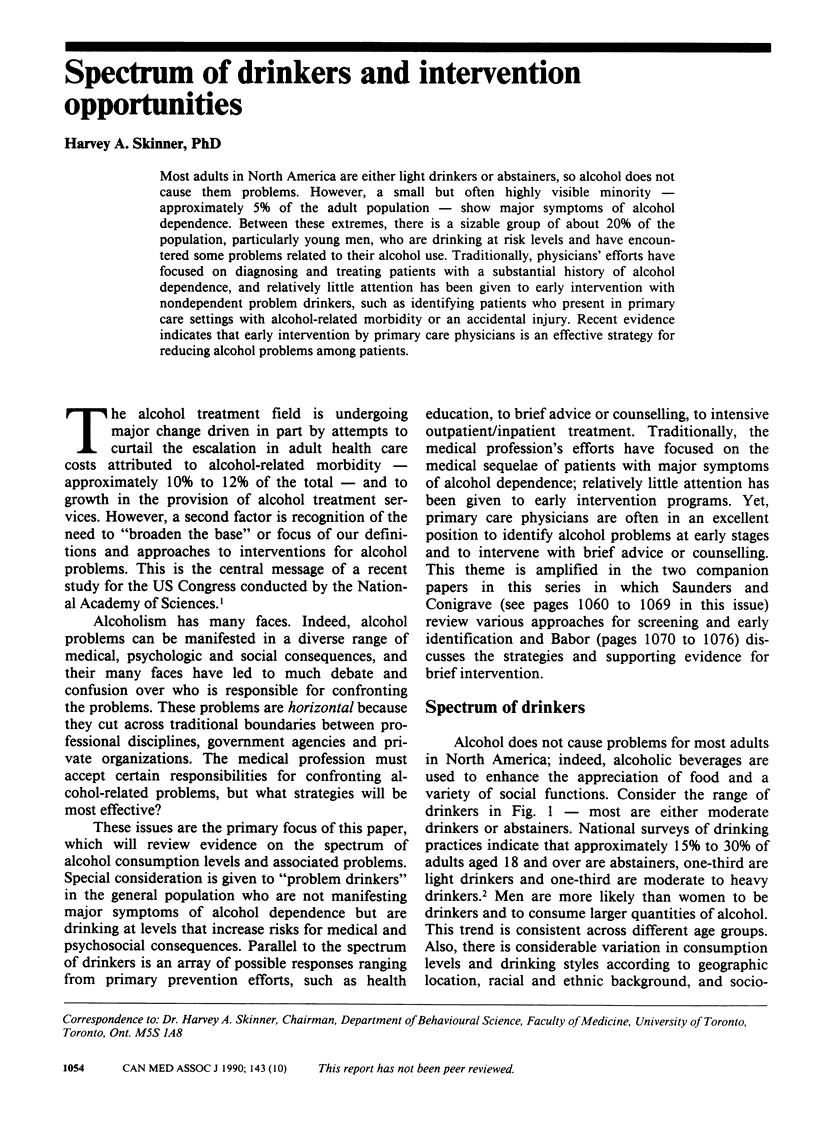
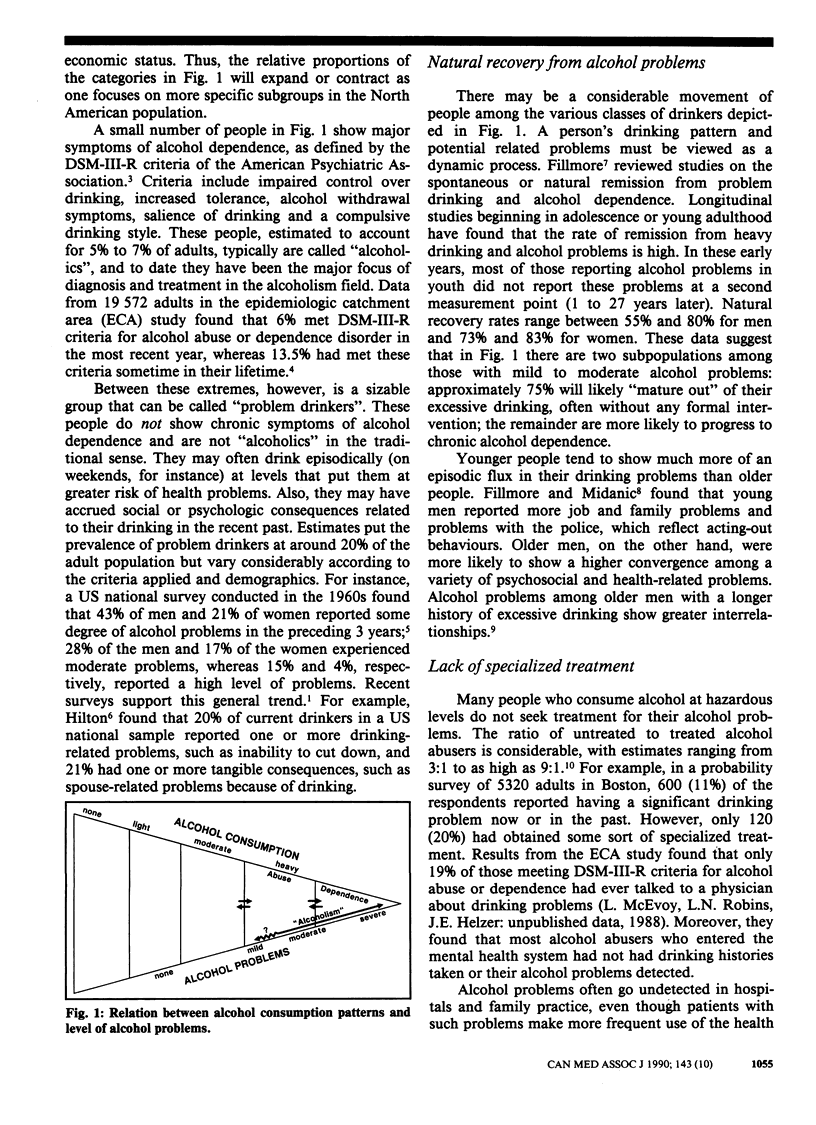
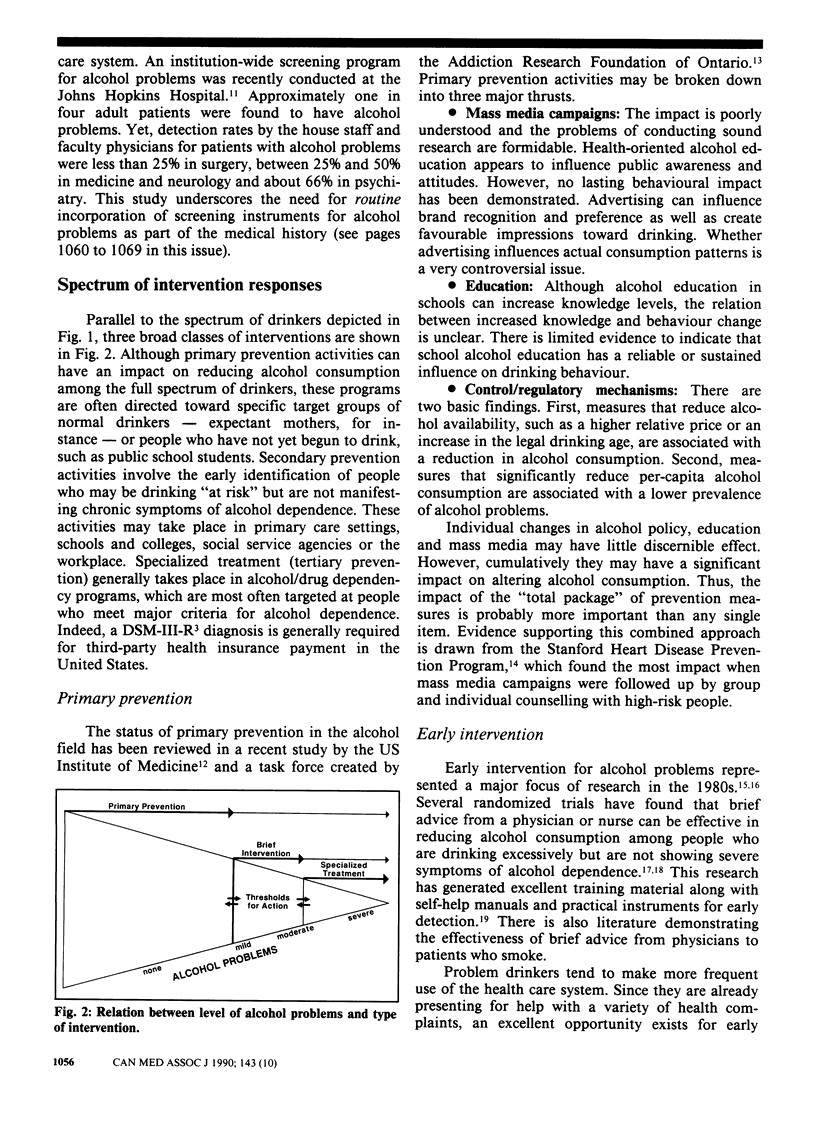
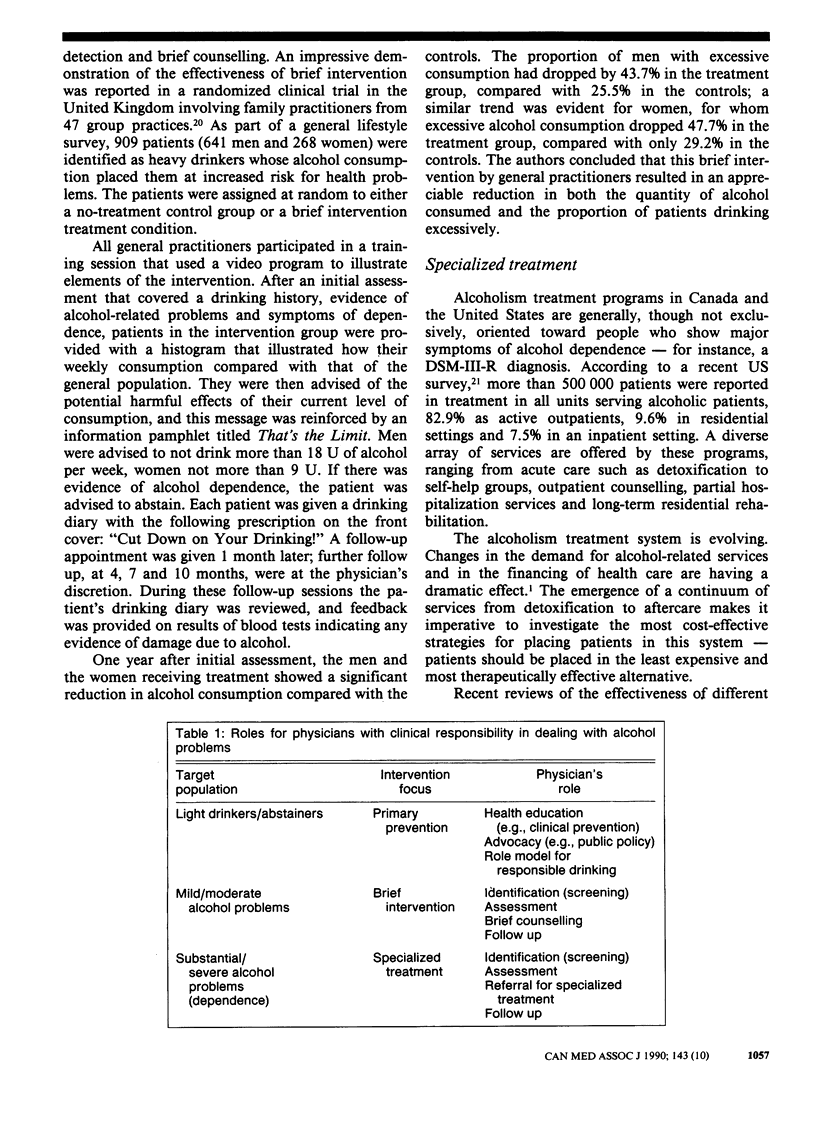

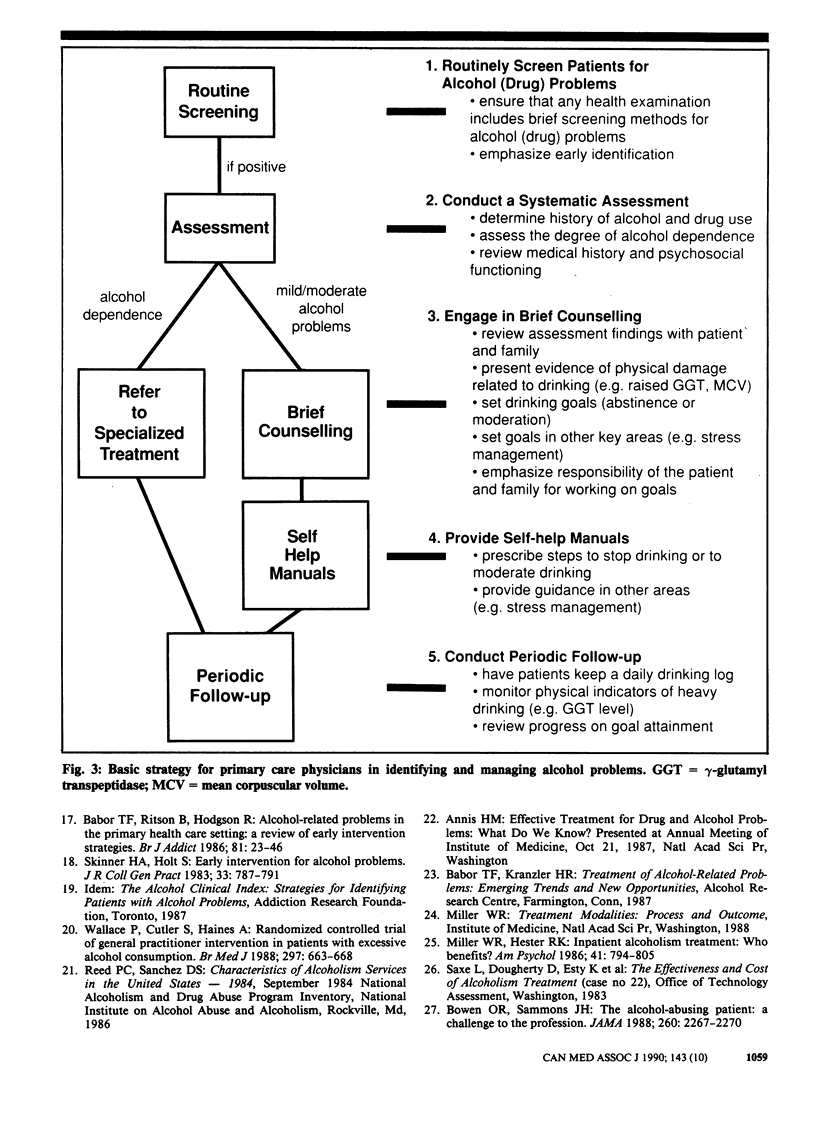
Selected References
These references are in PubMed. This may not be the complete list of references from this article.
- Babor T. F., Ritson E. B., Hodgson R. J. Alcohol-related problems in the primary health care setting: a review of early intervention strategies. Br J Addict. 1986 Feb;81(1):23–46. doi: 10.1111/j.1360-0443.1986.tb00291.x. [DOI] [PubMed] [Google Scholar]
- Bowen O. R., Sammons J. H. The alcohol-abusing patient: a challenge to the profession. JAMA. 1988 Oct 21;260(15):2267–2270. [PubMed] [Google Scholar]
- Farquhar J. W., Maccoby N., Wood P. D., Alexander J. K., Breitrose H., Brown B. W., Jr, Haskell W. L., McAlister A. L., Meyer A. J., Nash J. D. Community education for cardiovascular health. Lancet. 1977 Jun 4;1(8023):1192–1195. doi: 10.1016/s0140-6736(77)92727-1. [DOI] [PubMed] [Google Scholar]
- Fillmore K. M., Midanik L. Chronicity of drinking problems among men: a longitudinal study. J Stud Alcohol. 1984 May;45(3):228–236. doi: 10.15288/jsa.1984.45.228. [DOI] [PubMed] [Google Scholar]
- Hilton M. E. Drinking patterns and drinking problems in 1984: results from a general population survey. Alcohol Clin Exp Res. 1987 Apr;11(2):167–175. doi: 10.1111/j.1530-0277.1987.tb01283.x. [DOI] [PubMed] [Google Scholar]
- Miller W. R., Hester R. K. Inpatient alcoholism treatment. Who benefits? Am Psychol. 1986 Jul;41(7):794–805. doi: 10.1037//0003-066x.41.7.794. [DOI] [PubMed] [Google Scholar]
- Moore R. D., Bone L. R., Geller G., Mamon J. A., Stokes E. J., Levine D. M. Prevalence, detection, and treatment of alcoholism in hospitalized patients. JAMA. 1989 Jan 20;261(3):403–407. [PubMed] [Google Scholar]
- Polich J. M. The validity of self-reports in alcoholism research. Addict Behav. 1982;7(2):123–132. doi: 10.1016/0306-4603(82)90037-5. [DOI] [PubMed] [Google Scholar]
- Skinner H. A., Holt S. Early intervention for alcohol problems. J R Coll Gen Pract. 1983 Dec;33(257):787–791. [PMC free article] [PubMed] [Google Scholar]
- Skinner H. A., Holt S., Israel Y. Early identification of alcohol abuse: 1. Critical issues and psychosocial indicators for a composite index. Can Med Assoc J. 1981 May 1;124(9):1141–1152. [PMC free article] [PubMed] [Google Scholar]
- Wallace P., Cutler S., Haines A. Randomised controlled trial of general practitioner intervention in patients with excessive alcohol consumption. BMJ. 1988 Sep 10;297(6649):663–668. doi: 10.1136/bmj.297.6649.663. [DOI] [PMC free article] [PubMed] [Google Scholar]


